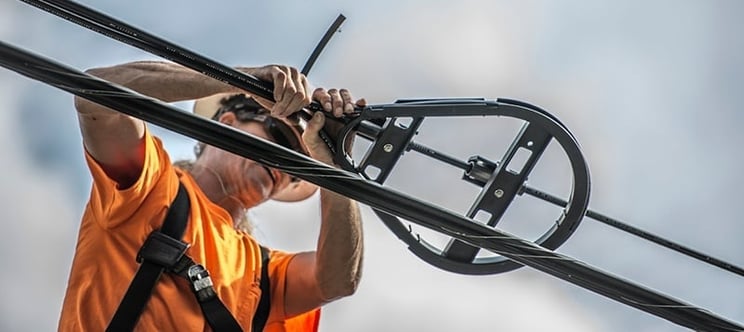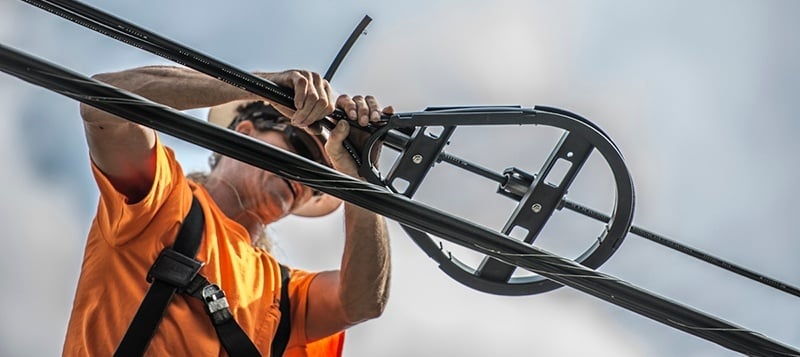Cutting and splicing fiber optic cable takes a lot of time, interrupts service to downstream customers and, therefore, needs to be avoided. One way to avoid splicing is to include extra fiber cable in places along the lines, in case the company needs to change out a pole or make a road crossing.
ETC Communications (ETC) in Ellijay, GA is a family owned company that has been in business for over 100 years. ETC uses fiber optic cable to provide telephone, cable TV, and high-speed Internet to about 17,000 customers in northern Georgia and southeastern Tennessee. They typically include 25 to 50 feet of spare cable approximately every fifth span. The question is…
HOW TO STORE THE EXTRA CABLE?
Option 1: Coiling
Extra cable can be coiled and attached to the pole. However, coiling can cause light loss. In a fiber optic cable, information is transmitted by light that travels through the glass fibers in the cable. Some light is lost when the cable is bent, especially when it is cold. “It does get cold here about four or five times a year,” says Van Powell, Construction Manager for ETC, “and when I say cold, I mean below 10°F. When it got below 18°F, we used to have excessive light loss in our long cable runs with lots of coils.” In addition to possible attenuation, coils stored on utility poles take up space and can be damaged by linemen climbing the pole.
Option 2: “Snowshoes”
ETC uses “snowshoe” storage systems to store extra fiber on the line. Snowshoes allow for the slack to be stored out in the span, reducing likelihood of damage while eliminating additional charges for using pole space. ETC’s storage systems have a turning diameter of about 20 inches. Two units are installed at an appropriate distance and the cable is stretched between them. This greatly reduces the number of turns--from hundreds to two and solves the problem of light loss.

The Opti-Loop® Storage System Advantage
ETC has been using products from a couple of different vendors, and last fall, they gave the Hubbell Power Systems, Inc. (HPS) Opti-Loop® storage systems a try. Powell explains, “There are probably 15 or 20 different companies that make similar systems and we’ve used different kinds in the past. Last year, Phil Peppers, ProCom Sales, brought us five sets of the Opti-Loop storage systems to try them. We put them up, and we like them.” While fiber optic snowshoes, in general, solve the problem, the Opti-Loop storage systems have an advantage: they are very easy to install. “There is a twisted aluminum support wire on the poles. That is what holds up the fiber optic cable. We bring in a bucket truck and attach each snowshoe to that cable with a bolt and clamp. The fiber optic cable is attached to the snowshoes with zip ties and along the support wire with lashers (little coils). It only takes about 15 minutes to mount the pair of snowshoes. The prices for the Opti-Loop storage system is competitive and they are easy and fast to install,” concludes Powell.



